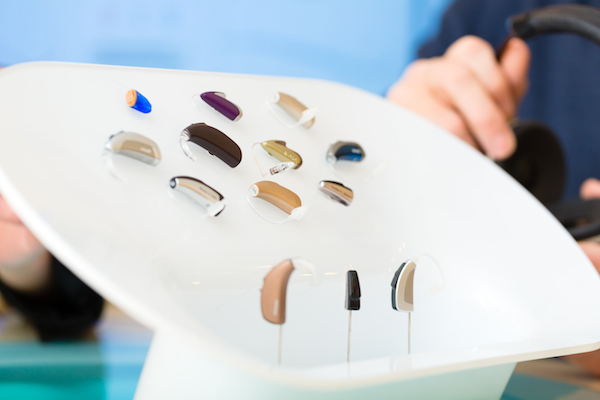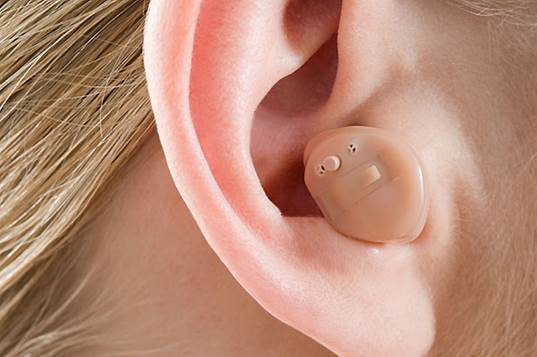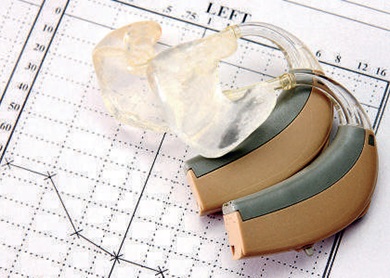New Hearing Aids And Audiophiles (Part
2)
Bluetooth
issues
Bluetooth
obviates the interference problem but has issues of its own. First, while the
Bluetooth standard itself is universal, the implementations in different
manufacturers’ hearing aids are proprietary. Second, Bluetooth requires
considerably more power to operate than a telecoil, which can have significant
outcomes for hearing aid battery life. Third, Bluetooth introduces latency –
time delay – to audio signals and this can be sufficient to be a problem,
particularly if the sound accompanies moving pictures.
Choosing such a hearing aid is the biggest single step you can
take
The reason that hearing aids which perform well with speech can
sound dire on live music or sound reproduced over loudspeakers lies in the
fundamental differences that exist between the two types of signal. Generally,
music signals have a wider bandwidth, higher intensity and greater crest factor
(the ratio of peak to mean levels) than speech. Whereas speech, even shouted
speech, rarely exceeds 85dB SPL in level, peaks when listening to a symphony
orchestra can reach 110dB SPL or more, and 115dB or higher for orchestral
musicians.
Crest factor
The bandwidth of music is also more variable than that of speech,
reaching out to both lower and higher frequencies. Whereas a telephone-like
bandwidth has traditionally been considered sufficient for speech in hearing
aids, it isn’t for high quality music reproduction. Crest factor on speech is
typically 12dB whereas on wide dynamic range music programme it can reach 20dB
or more, and I have one percussion recording where it is over 30dB. These
differences between speech and music signals mean that hearing aid performance
requirements for the two are quite different. Increasing the bandwidth of a
hearing aid from a typical 5kHz to 10kHz or higher can considerably enhance the
enjoyment of music.

Some
newer hearing aids will now accommodate 105dB SPL or higher, which can be a
real boon when it comes to listening to music. An audiologist who specializes
in sourcing hearing aids for audiophiles and musicians will help you identify
suitable models
As an additional benefit it also aids speech intelligibility since
all the consonant sounds that are so important to conveying meaning are now
encompassed. To quote a well-known example, the semantic difference between ‘My
son is sailing at school’ and ‘My son is failing at school’ is considerable but
spectrally the differences lie at frequencies above telephone bandwidth, the
sibilant ‘s’ in sailing generating a burst of frequencies that lie between
about 4kHz and 14kHz. Pushing the low-frequency limit of a hearing aid down to
50Hz or lower also improves performance on music.
Bring the noise
When hearing aids sound distorted on music – as they often can –
it isn’t a bandwidth issue, though, but a problem of being unable to
accommodate the higher peak levels of music. As speech rarely, if ever, exceeds
85dB SPL it used to be common practice to design hearing aids for a maximum
input of 85-90dB. Anything louder was presumed to be noise and was subject to
severe limiting, which introduces distortion. Some hearing aids are still like
this but others will now accommodate 105dB SPL peak or, ideally for music
listening, higher. Choosing such a hearing aid is the biggest single step you
can take towards improving sound quality when listening to music, but this
parameter isn’t commonly specified by manufacturers as currently it isn’t a
requirement of any hearing aid standard. An audiologist who specialises in
sourcing and configuring hearing aids for audiophiles and musicians will help
you identify suitable models, and a relatively quick and easy check of the peak
limiting level has been described by Canadian Marshall Chasin, who has
published a series of papers on the subject of music reproduction via hearing
aids. Unfortunately specialist equipment is required to perform the test; it’s
not omething you can do yourself.
Distortion Figures

Just how bad the distortion can be is illustrated by a table in
Chasin’s paper, reproduced here, which lists the total harmonic distortion
(THD) on a 1.6kHz sine wave input at 90dB SPL and 100dB SPL respectively for
five popular advanced digital hearing aids of the time. Just one of the five
aids – identified only as Aid No2 – achieved distortion figures that
audiophiles would consider acceptable. On the 100dB SPL input it generated
4%THD while three of the remaining four recorded over 50% THD – and this at a
level well below the peaks experienced with music. The block diagram (top
centre) shows the functional structure of a digital hearing aid. Premature
limiting can occur in two places within the input stages immediately downstream
of the mic: either in the initial preamp or in the analogueto- digital
converter (ADC). Nothing can be done in the subsequent processing circuitry to
correct this problem, so it is essential that such limiting is prevented. In
hearing aids designed for good performance on music the preamp will typically
accept input levels up to 110dB SPL or more, and so will the ADC. Increasingly
20-bit or 24-bit ADCs are being used in preference to previous 16-bit types in
order to accommodate these high peak levels and allow sufficient headroom for
response equalisation while keeping noise levels sufficiently low. Sampling
rates have also increased, better hearing aids now using 32kHz to provide an
audio bandwidth of about 16kHz.

Two
behind-the-ear hearing aids atop an audiogram
Core message
Getting the hardware right, though, is not the only prerequisite
to achieving good results on music. It is also essential that the hearing aid
has a dedicated music program which adjusts or defeats aspects of the signal
processing that are essential for best results with speech but compromise
musical enjoyment. It is normal, for instance, to switch off the directional
microphone feature and to select a compression algorithm that maintains both
the dynamic contrasts and the tonal balance of the input signal. There’s
obviously a great deal more to be said on this subject for hearing-impaired
audiophiles, and we hope to hear of your experiences in this area in our
letters pages. But the core message is plain enough.